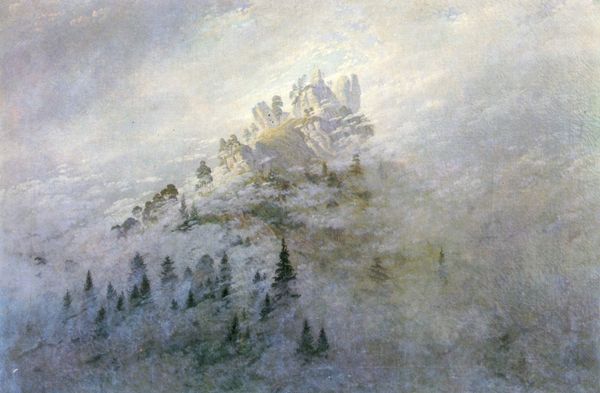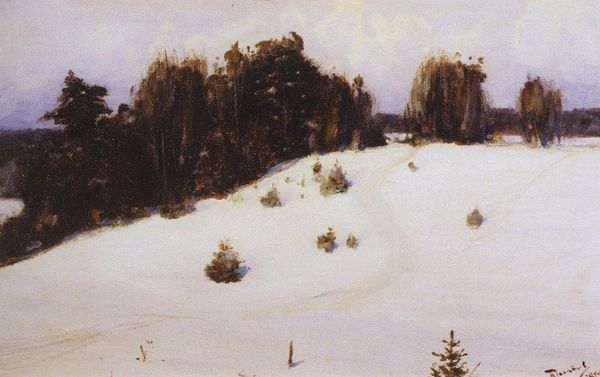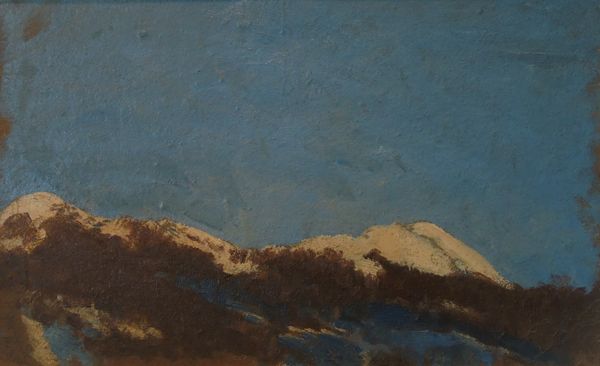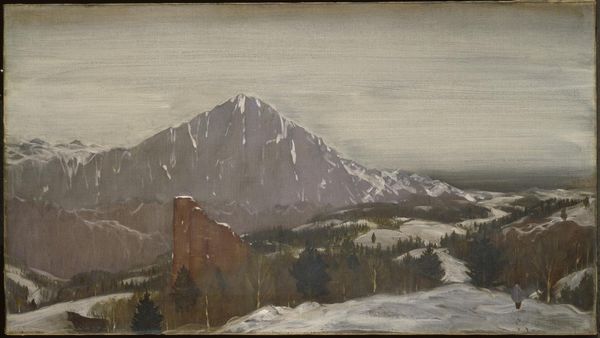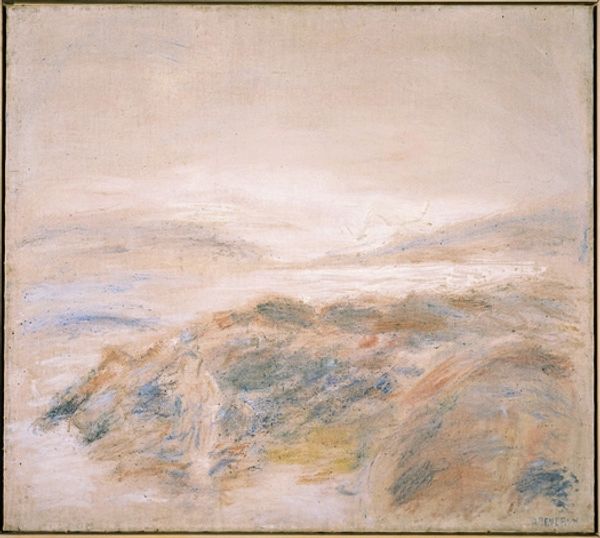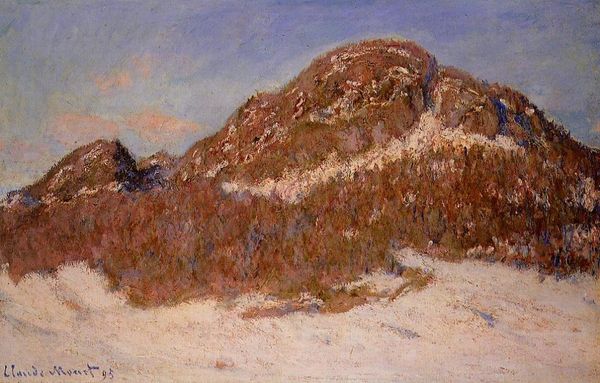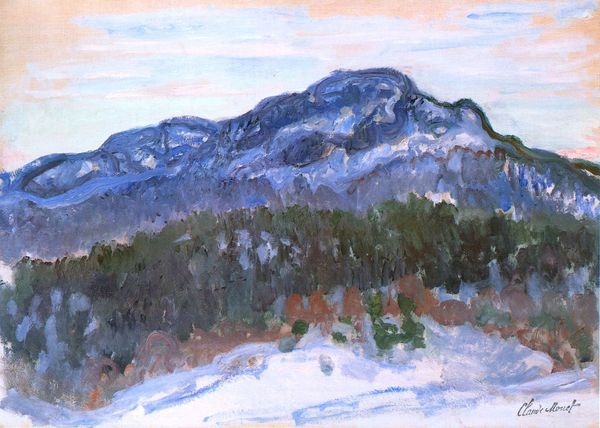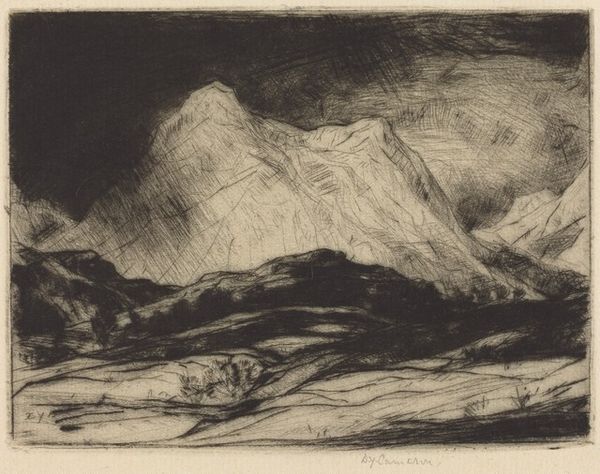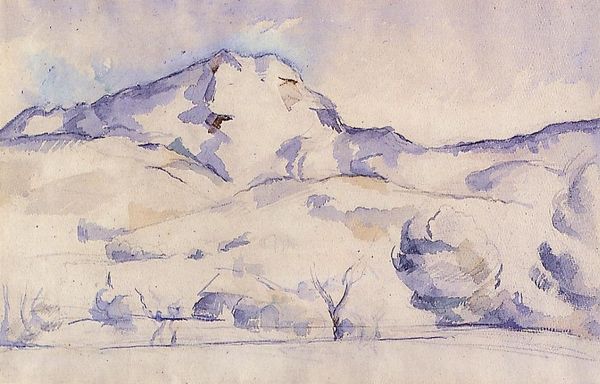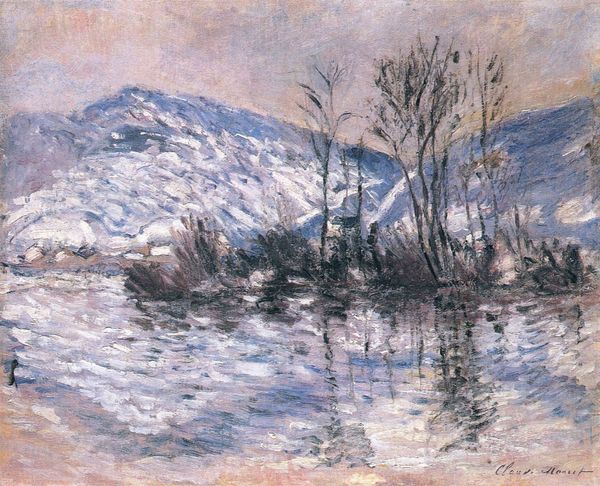
Copyright: Public domain
This is Claude Monet's study of "Mount Kolsaas in Misty Weather," likely created in 1895 using oil on canvas. The painting primarily explores the interplay between light, atmosphere, and form. Monet reduces the mountain to a composition of tonal variations, dominated by blues and greys. The visible brushstrokes create a sense of movement, mimicking the ephemeral quality of mist and weather. Monet’s interest lies not in the precise representation of the mountain but in capturing the transient effects of light and atmosphere. This approach aligns with the Impressionist focus on sensory experience. The mountain's solid form is dissolved into a play of light and shadow, challenging traditional notions of landscape painting. Ultimately, Monet's work is a powerful demonstration of how visual elements like color and brushstroke can be used to destabilize established meanings, inviting viewers to reconsider their perceptions of nature and representation.
Comments
No comments
Be the first to comment and join the conversation on the ultimate creative platform.

